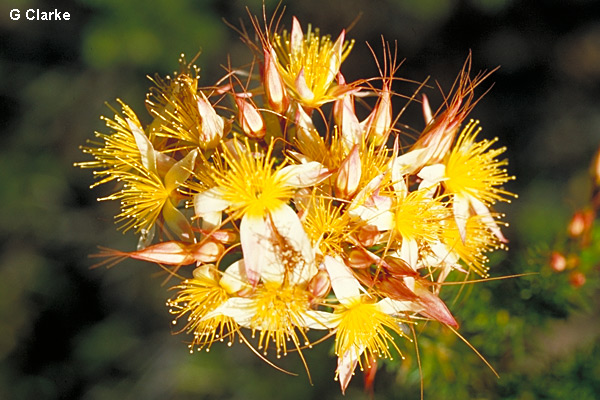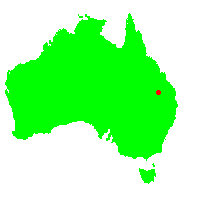General Description:
Calytrix consists of about 75 species, all endemic to Australia with the greatest concentration being in the south-west corner. Most are small to medium shrubs with star-like flowers ranging in colour from white through, yellow, pink and purple to red.
Calytrix gurulmundensis is a small to medium shrub between 0.5 and 1.5 metres high. The large, star-shaped flowers are 15 – 20 mm in diameter and have cream petals with a bright yellow centre. In common with most Calytrix species, a feature of the flowers is the “awns” or fine hairs which extend from the calyx lobes beyond the petals. Flowering time is likely to be late winter to spring.
Apart from C.tetragona (fringe myrtle), Calytrix has not received widespread cultivation. Calytrix gurulmundensis, in particular, is virtually unknown in cultivation so conditions for growing it successfully rely on speculation. Based on experiences with other species from the eastern states, it seems likely that it would be adaptable to well drained soils in sun or semi-shade.
Propagation of C.gurulmundensis is best from cuttings as seed can be difficult to germinate. Experimentation into the use of grafting has been carried out with Calytrix species using the closely related genus Darwinia as root stock. Some success has been reported but it is not known whether grafting of C.gurulmundensis has been attempted.
For further information on cultivation and propagation of Calytrix, see the article on growing Calytrix on the Geraldton Wax and Relatives page.
* EPBC Act = Environment Protection and Biodiversity Conservation Act 1999;
ROTAP = Rare or Threatened Australian Plants (Briggs and Leigh, 1988)
For further information refer the Australian Plants at Risk page

Calytrix gurulmundensis
Photo: Geoff Clarke
 Australian Native Plants Society (Australia)
Australian Native Plants Society (Australia)